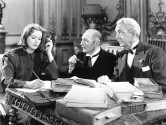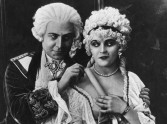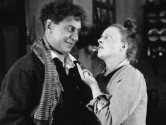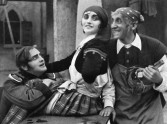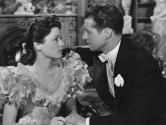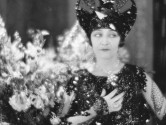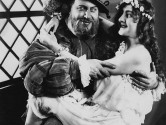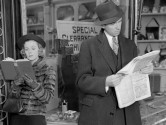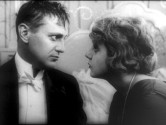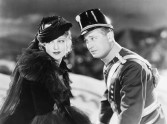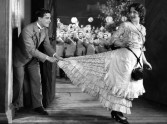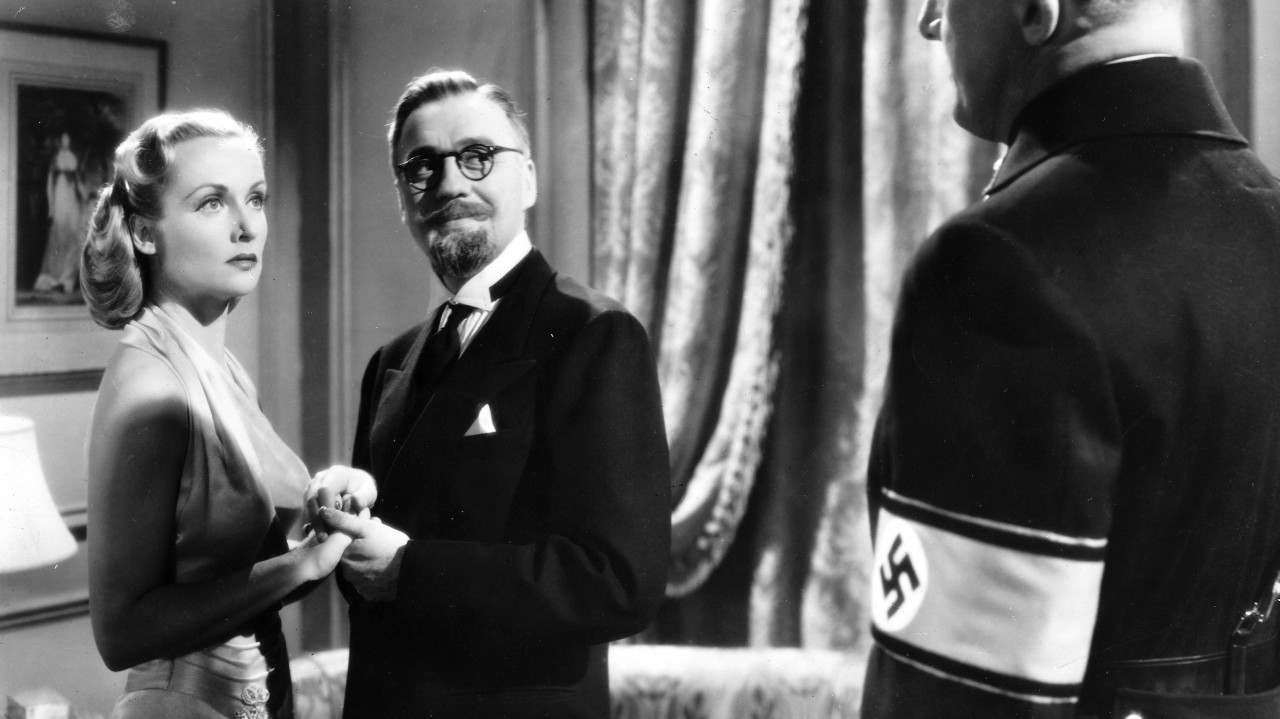
That Certain Feeling... The Touch of Ernst Lubitsch
Tales of exiled European filmmakers arriving in Hollywood to rattle the walls of the film industry abound throughout history, from the leftist dissidents who faced institutional scrutiny for critiquing American Dream mythology (Billy Wilder, Edgar Ulmer, William Dieterle) to the exotic visionaries waging their idiosyncratic temperaments within established and sometimes disreputable genres (Fritz Lang, Josef Von Sternberg, Max Ophüls). Far rarer were the émigrés who not only set the groundwork for entire genres, but also managed to command near-universal respect from peers, audiences and heads of industry in the process. If any figure can be said to have staked this position beyond Alfred Hitchcock, it is the German-born Ernst Lubitsch (1892 – 1947).
Once deemed “the Griffith of Europe,” Lubitsch’s greatest achievements were in fact in the American cinema, where he effectively raised the bar for screen comedy, laid confident steps into the tenuous terrain of the “talkie,” and forged the movie musical from a toolshed of cumbersome equipment and unproven actor-singers. Having worked for each of the major Hollywood studios at various points in his career until his death in 1947, Lubitsch was a figure of supreme industry cachet and high mainstream visibility who nonetheless cultivated what a publicist famously referred to as “The Lubitsch Touch”—that is, a markedly singular brand in a mass-produced medium. In essence, the catchphrase forecasted the later emergence of auteurism as a foundational critical theory used to elevate otherwise unsung studio directors. That it was penned initially for marketing purposes speaks to Lubitsch’s peculiar case as a mainstream artist whose eccentricity was the very substance of his populism.
Born into a working-class family in Berlin in 1892 (a background better reflected in his cigar-chomping, fedora-wearing appearance than in the largely swanky settings of his films), the young Lubitsch waived a stable opportunity at his father’s tailoring business for the brighter prospects of the theatrical world. By his late teens, he had already obtained a position in the Max Reinhardt Company, which would lead to much-loved roles as stereotypical neurotic Jews in early German silent comedies. Understandably disillusioned by this thankless typecast, which was a popular vessel for broad humor at the time, Lubitsch shifted course to directing. His nascent one-reeler efforts, which have since been lost, evidently scored the attentions of financiers and permitted Lubitsch his first collaborations with actors Emil Jannings and Pola Negri, staples of his decade-long pre-American career. His two most popular triumphs from this era, Madame DuBarry and Anna Boleyn,were historical epics that projected an air of respectability that runs counter to the now-popular understanding of Lubitsch, but which nevertheless rocketed the director to international renown.
Ironically, the qualities that Lubitsch was hailed for in these early outings and which earned him his ticket to America—namely, his impressive facility with then-astronomical budgets and enormous casts—tapered off swiftly when the filmmaker migrated to Hollywood. As early as his first job in California, Mary Pickford proclaimed him “a director of doors, not people” after their combative experience on Rosita (1923). The star’s flummoxed characterization refers most specifically to the emphasis in Lubitsch’s mise-en-scene on closed doors concealing implied narrative action, but more generally to his preference for innuendo over direct displays of emotion, manifested by his famously canny sense of offscreen space. Though this style didn’t calcify until the early thirties, it was there in embryo when Lubitsch worked with Pickford, emerging as part of a conscious, ongoing effort on the part of the director to scale back on his productions—a paring-down that naturally led him to the drawing-room comedy as a recurring mode of address.
Crucial to this development was Lubitsch’s six-film deal with Paramount Pictures starting in 1928, which would eventually balloon into over a decade of steady work with the studio and even an unheard-of, albeit fleeting, position as their head of operations. Lubitsch’s early musicals at Paramount—many of which starred grinning Frenchman Maurice Chevalier and gutsy Broadway player Jeanette MacDonald—transcended the constraints of immature sound technology through the sheer comic invention and vitality of their featured performers, but they also shined on the basis of their sustained rebukes to the puritanical morality espoused in contemporaneous Hollywood fare. An avowed skeptic of monogamy and an inheritor of more liberal European understandings of amour, Lubitsch happily infused suggestions of infidelity and carnal passion into romantic tales, initiating a shockwave to a traditional mode of American storytelling and freeing up untold new comic opportunities.
Just as Lubitsch was beginning to push his cosmopolitan sensibilities into ever-riskier places with subversive farces like Trouble in Paradise and Design for Living (both of which humanize and even valorize characters who may have been mere scoundrels in safer productions), a groundswell of cultural conservatives, fueled by Depression anxiety and a fear of foreign influences, pressured Hollywood to enact the restrictive Production Code. However, in a twist of fate (or, as Wilder would call it, a “superjoke”) worthy of a Lubitschean plot, this systemic development ultimately proved a stimulus rather than a roadblock for the director, who thrived on stiff guidelines that would further encourage the uses of insinuation and double entendre. Lubitsch’s grand theme as a filmmaker was the tension between surface formalities and latent urges, and the masterpieces he directed under the Code—a series of seemingly fluffy entertainments that included Ninotchka, The Shop Around the Corner, To Be or Not to Be, and Heaven Can Wait—repeatedly tapped into the tremors that arise when desire contradicts manners.
Prudishness in the face of such tension is the reflex to be avoided in all Lubitsch films, but the director’s signature “touch” always sidestepped condescension in favor of good-humored ribbing. In Design for Living, for instance, a stick-in-the-mud American, played by Edward Everett Horton, remarks, “Immorality may be fun, but it isn’t fun enough to take the place of one-hundred-percent virtue and three square meals a day”—the kind of hyperbolically priggish line delivery that Lubitsch and his longtime screenwriting partner Samson Raphaelson would often bequeath to similar romantic buffoons throughout their oeuvre. Of course, Lubitsch knew that immorality, as defined by Horton’s character, is not only fun but also healthy, and the quintessential Lubitschean protagonists, seen throughout his films sparring in erotically charged two-shots, recognize earthly indulgence as a necessary tonic to the exhaustion of conforming to the seemingly arbitrary conditions governing society. Exploring the canon of American screen comedy, one would be hard-pressed to come upon a great film in which this dilemma is not the structural basis. Lubitsch, the impure eccentric, is the culprit. – Carson Lund

